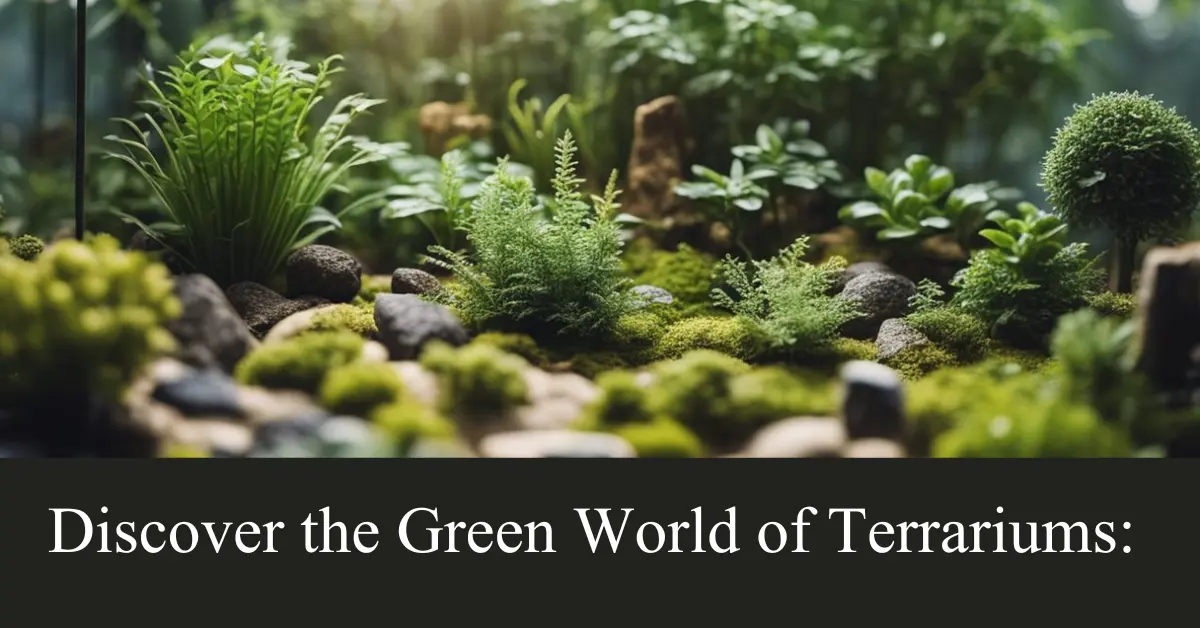
Discover the Green World of Terrariums: Bringing Nature Indoors
Amidst the dominance of concrete jungles in our surroundings, the allure of nature holds a special place in our hearts. Terrariums, miniature gardens enclosed in glass containers, offer a delightful way to bring the beauty of plants into our homes and workspaces. Let’s dive into the world of terrariums and explore the benefits of using plants in these charming ecosystems.
What Are Terrariums?
Terrariums are self-contained ecosystems that mimic natural environments within a glass container. They typically feature layers of soil, gravel, and activated charcoal to create a miniature landscape suitable for plant growth. Terrariums come in various sizes and designs, from small desktop versions to large, ornate creations.
The Benefits of Terrariums
- Low Maintenance: One of the primary advantages of terrariums is their low maintenance nature. Once established, these mini ecosystems require minimal watering and care, making them ideal for busy individuals or those with limited gardening experience.
- Indoor Greenery: Terrariums allow you to introduce greenery into indoor spaces, even in areas with limited natural light. Certain terrarium plants thrive in low-light conditions, making them perfect for offices, apartments, or rooms with small windows.
- Air Purification: Plants play a crucial role in air purification by absorbing carbon dioxide and releasing oxygen. Terrariums contribute to a healthier indoor environment by improving air quality and reducing pollutants.
- Stress Relief: Studies have shown that interacting with nature, even in small doses such as tending to a terrarium, can reduce stress levels and improve overall well-being. Watching plants grow and thrive can be a therapeutic experience.
Terrarium Plants: Choosing the Right Greenery
When creating a terrarium, selecting the right plants is key to success. Here are some popular terrarium plants that thrive in enclosed environments:
- Succulents: Succulents like jade plants, echeverias, and haworthias are ideal for terrariums due to their ability to store water in their leaves. They are low-maintenance and add a variety of shapes and textures to your miniature garden.
- Ferns: Ferns such as maidenhair ferns, button ferns, and bird’s nest ferns thrive in humid environments, making them well-suited for closed terrariums. Their lush foliage adds a touch of greenery and elegance.
- Air Plants: Tillandsias, or air plants, are unique in that they don’t require soil to grow. They absorb moisture and nutrients through their leaves, making them a great choice for open terrariums or designs with minimal soil.
- Mosses: Mosses are excellent ground covers for terrariums, adding a carpet of green that enhances the natural look of your miniature landscape. They thrive in moist, shaded environments.
Creating Your Own Terrarium
Ready to dive into the world of terrariums? Here’s a basic guide to get you started:
- Choose a Container: Select a clear glass container with a wide opening for easy access and plant arrangement.
- Layering: Add a layer of gravel or small stones at the bottom for drainage, followed by a thin layer of activated charcoal to prevent odors and mold.
- Soil: Use a well-draining potting mix suitable for your chosen plants. Create hills and valleys to add visual interest.
- Planting: Carefully plant your chosen terrarium plants, arranging them according to their size and growth habits. Use small tools or chopsticks for precise placement.
- Decoration: Enhance your terrarium with decorative elements such as small rocks, driftwood, or miniature figurines to create a whimsical scene.
- Maintenance: Place your terrarium in indirect sunlight, and water sparingly based on the needs of your plants. Monitor for any signs of overwatering or pests.
Terrariums offer a delightful way to connect with nature and add a touch of greenery to any space. Whether you’re a seasoned gardener or a beginner, these miniature gardens are sure to bring joy and a sense of tranquility into your life. Experiment with different plant combinations and designs to create your own miniature oasis indoors.
